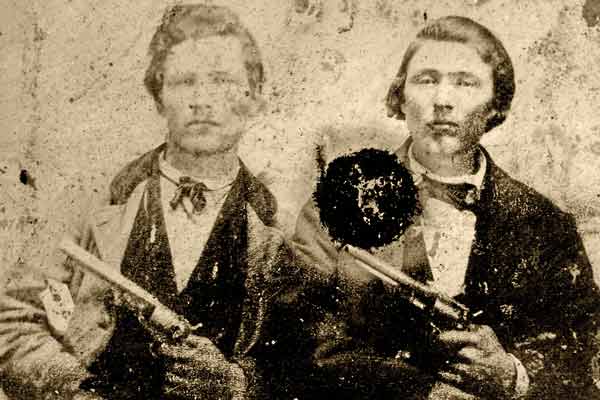
Although loading blackpowder six-guns, which represent the era of 1840s-70s, require a different way of handling them than do metallic cartridge firearms, one rule is still in play—safety first!
Because of their ease of handling, relatively compact size and light weight, handguns are mishandled more than any other type of firearm. Percussion six-guns are no exception. Here are some loading safety tips that you should always follow when charging a blackpowder cap-and-ball six-shooter.
A percussion revolver is loaded through the front of the cylinder, rather than through the rear end as with a metallic cartridge six-gun. Because of this loading method, it is erroneously nicknamed “muzzleloader,” despite the fact that the revolver is not loaded through the muzzle.
The safe method for loading any cap-and-ball revolver is as follows: First, put on your suitable eye and ear protection, and make sure the revolver has no obstructions, in the bore, nipples (cones) and chambers, by visually inspecting each. Once you determine all channels are cleared, fire a percussion cap on each nipple, facing downrange, to remove any excess oil. Next, bring the hammer to the half-cock position and pour in your powder charge. The safest way is to first pour your preferred charge into a powder measure from your powder flask, then from the measure into the chamber. Do not pour powder directly from a flask into the chamber—especially if you’ve just fired the revolver, as the chamber may still have hot embers from the previous shot.
After you pour your powder charge, place your projectile sprue down in the chamber (if using a cast ball). Then, with the revolver’s loading lever, seat the projectile snugly over the powder. No air space should exist between ball and powder. Next, place a small amount of a grease-type lubricant on top of the ball to prevent a multiple discharging of the chambers. However, if you are using the thick felt-type wadding, such as the pre-lubed and pre-cut Ox-Yoke Originals “Wonder Wads,” instead of a grease-type lubricant, then you will need to place the wad directly over the powder charge, compress it and seat the projectile firmly over the wad. Last, place the caps firmly over the nipples.
Because the gun’s muzzle is pointing upwards during loading, and the loader has a tendency to press his revolver-wielding arm against his body for support, the barrel could be placed in a direct line of fire with your face. Take care to always angle the
six-gun’s muzzle downrange and away from you, and keep your finger clear of the trigger.
Once you have loaded your revolver, make sure to carry it safely. Revolvers like the Remingtons were made with special notches cut in, while those like the Colts use small pins protruding from the rear of the cylinder. These were designed so that the hammer could be locked in a lowered position with a fully loaded cylinder without it resting on a loaded chamber. However, many Colt-type replicas have omitted these “safety pins,” which, at best, are rather weak and are easily sheared off. These small pins are often found worn down or nonexistent on some models.
As with 19th-century-type single action cartridge revolvers like the 1873 Colts, the best approach to carrying a loaded caplock Colt-type six-gun is to leave one chamber empty and lower the hammer on that empty chamber.
By following these simple and safe loading and carrying procedures, in accordance with the laws governing your area, you can enjoy a lifetime of blackpowder six-gun shooting fun…and that’s the joy in owning old-timey six-guns.
Phil Spangenberger has written for Guns & Ammo, appears on the History Channel and other documentary networks, produces Wild West shows, is a Hollywood gun coach and character actor, and is True West’s Firearms Editor.
Photo Gallery
– True West archives –
– All photos by Phil Spangenberger unless otherwise noted –











